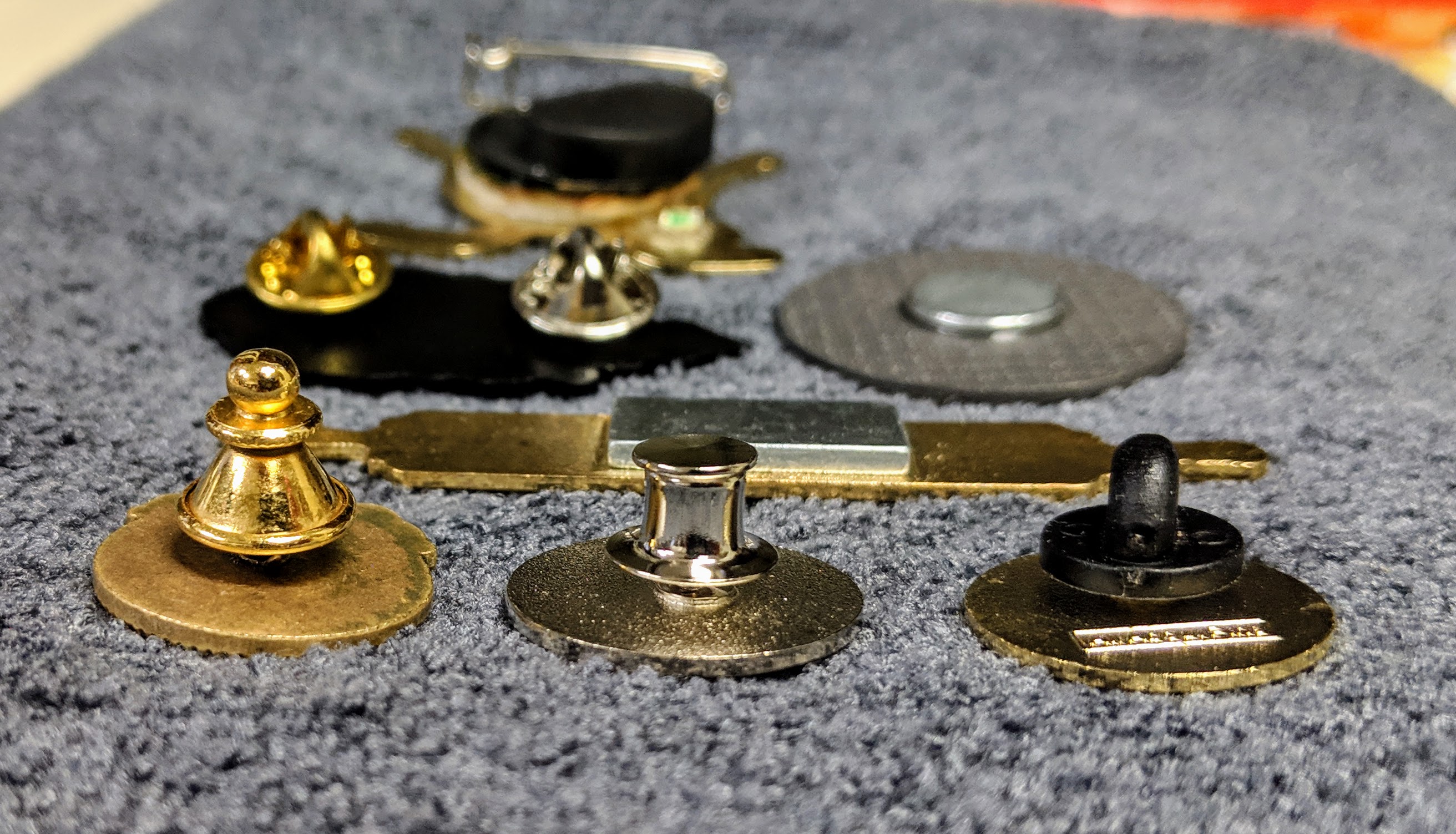

From jackets and shirts to book bags and purses, pin attachments keep your custom pins strongly attached to most pieces of material. However, they’re often overlooked in the design process. With designers spending their time adding line detail and color to custom pin designs, what pin back will be the best option to keep it secured in place is often ignored. The right pin attachment can establish your pin’s perceived quality or wear it will be worn.
Some pin attachments are more secure for rougher wear on bags or coats, others are easier to display on cloth surfaces, and others can make a pin appear more elegant and valuable. Putting thought into the right backing for your pins helps elevate your product to the next level and creates a higher quality product. For this blog, we will be exploring our most popular pin attachments and what makes them different from one another.
Also known as military clutches, butterfly clutches are one of the most popular types of pin attachments. A butterfly clutch has two metal prongs that you squeeze to fasten a pin or release it. They’re one of two standard pin attachments and are quite reliable, but odd movements over clothing folds can accidentally press one of the prongs and release the clutch.
Easy to put on and off, rubber clutches are another popular pin attachment which simply is pushed into a pin’s needlepoint to fasten and release a pin. They’ve gained popularity in recent years with the rise of enamel pins and can come in different colors to match a pin’s plating or paint detailing. Rubber clutches are one of our two standard attachments and are more comfortable to wear for pins intended to be worn against the skin.
Featuring a metal locking mechanism that latches onto a pin needle, jewelry clutches hold on much more securely than butterfly clutches or rubber clutches. To attach a jewelry clutch, simply push the metal nub of the clutch up before slipping the needle into the pinhole and releasing. These clutches are popular for their elegant design and secure hold against most any fabric or jostling from the wearer.
Similar to jewelry clutches, deluxe clutches, known also as flathead locking clutches, also feature an internal locking mechanism that grips a pin’s needlepoint to fasten a pin into place. Deluxe clutches are very secure and ideal with pinning onto outerwear such as jackets or onto surfaces that can expect to get some rough treatment, such as book bags or purses.
This type of backing is best for fastening the pin to thinner materials and consists of two magnets, one installed into the pin itself and another to help it attach to materials. Magnetically backed pins are technically not pins in the traditional sense, instead of piercing fabric or material to pin into place it relies on the attraction between two magnets to keep in place. Magnetic backing allows you to attach your pin to clothes and other surfaces without poking holes in the material.
Similar to the attachments used for buttons and, well, safety pins, most people are likely familiar with using this type of pin backing and it’s sometimes preferred because it’s much harder to lose a safety pin implanted into a pin than it is to lose a detachable clutch.
Choosing a pin attachment is often a matter of personal aesthetics, but it may be a good idea to consider where your pins expect to be worn and who’s going to wear your custom pins. Some pin attachments are ideal for certain apparel for example, while others hold better against rough wear.
Putting thought into your choice of attachment can go a long way to making a custom pin uniquely suited to your needs. Here are a few quick tips about each pin type to help you decide:
If you have any questions about pin attachments and which one might be best for your own custom pins, don’t be shy. You can contact All About Pins at info@allaboutpins.com or call us at 1-866-604-9462. Our representatives are ready to guide you along the customization process.
Interested in learning more about designing custom lapel pins? All About Pins Custom Pins 101 articles explores the basic language and design options behind every custom pin.